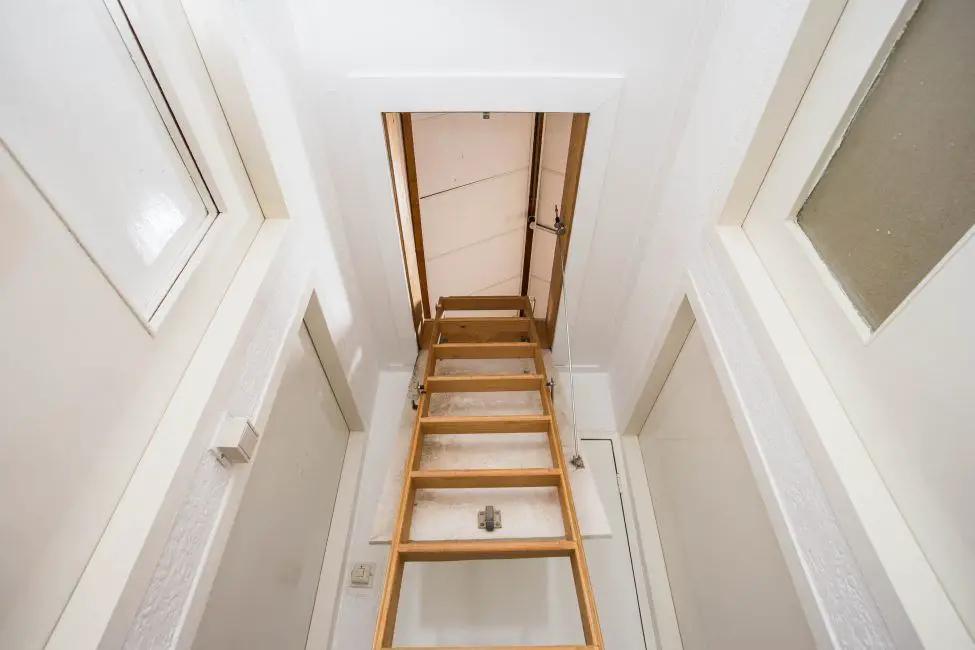Sealing an attic door is an important step in improving the energy efficiency of your home. Attic doors, also called access panels or scuttle holes, allow access to the attic space for storage or maintenance. However, attic doors can also allow conditioned air to escape from the living space below. This air leakage can lead to higher energy bills as your HVAC system works harder to maintain temperature. Properly sealing your attic door is a relatively simple process that can provide big benefits.
Page Contents
Why Seal the Attic Door?
There are several key reasons you may want to seal your attic door:
- Reduce energy loss: Attic doors are often a major source of air leaks in the home. Sealing the attic door can significantly reduce the amount of conditioned air escaping into the attic.
- Improve comfort: Sealing air leaks helps keep stable temperatures in the home, reducing drafts from unconditioned attic air entering the living space.
- Prevent moisture issues: Air leaks can allow warm, moist air to enter the attic space in winter. This moisture can lead to mold, rot, and other problems.
- Make HVAC more efficient: Reducing air leaks takes strain off your heating and cooling system so it doesn’t have to work as hard.
- Prepare for attic insulation: Sealing the attic door provides a tighter envelope if you plan to add more attic insulation.
Taking the time to seal your attic door can pay off with a more comfortable home and lower utility bills.
How to Seal the Attic Door
Sealing an attic door involves following a few simple steps:
Materials Needed
- Caulk and caulk gun
- Spray foam sealant
- Weatherstripping
- Insulation (optional)
- Protective equipment like gloves, goggles, and mask
Gather these supplies before starting work. Make sure to get the appropriate caulk for the materials involved – latex, silicone, or polyurethane. Spray foam works well for sealing gaps and penetrations. For weatherstripping the door itself, look for adhesive-backed foam or vinyl strips.
Steps to Seal the Attic Door
- Inspect the door and surrounding framing. Look for gaps, cracks, or openings that allow air to pass through. Pay special attention to the hinge side, latch side, and top of the door frame.
- Clean the surfaces. Use a vacuum and damp cloth to remove any dirt, dust, or debris where you will be applying caulk and weatherstripping. Dry completely.
- Apply caulk. Run a bead of caulk along any cracks or gaps in the door frame and surrounding ceiling opening. Smooth the caulk with a finger or tool to create a continuous seal.
- Fill gaps with spray foam. Spray foam expands to fill crevices, cracks, and holes. Use it sparingly in any openings larger than 1⁄4”.
- Weatherstrip the door. Cut pieces of adhesive foam or vinyl weatherstripping to fit along the tops, sides, and bottom of the door. This seals the door when closed.
- Check for light. Close the attic door and turn off lights. Look for any daylight shining through unsealed areas and apply additional caulk or spray foam as needed.
- Add insulation (optional). For additional efficiency, lay fiberglass batt insulation over the attic door before closing it again. This insulates the back of the door panel.
Take care not to block the attic door from opening and closing properly when applying sealants. The goal is to fill all cracks and gaps without restricting operation.
Tips for Sealing the Attic Door
Follow these tips for the best results when sealing your attic door:
- Seal from the attic side too. This provides protection in case the living space seal fails.
- Insulate any pull-down ladders or stairs. Folding attic ladders can leak air. Sealing and insulating them is important.
- Replace weatherstripping if degraded. Check for cracks, gaps, or missing sections in old weatherstripping and replace if needed.
- Use high quality caulk and spray foam. Don’t skimp on sealants – they do the actual work of sealing air leaks.
- Consider an insulated door panel. Swapping the attic door for an insulated model provides higher efficiency.
- Have proper ventilation. Make sure to maintain attic ventilation when sealing attic air leaks.
Proper attic ventilation is important for preventing moisture and ice dam problems, even when the attic door is sealed. Consult local codes for attic ventilation requirements.
Conclusion
Sealing your attic door correctly takes some time and effort, but is one of the most cost-effective air sealing measures you can do. Carefully sealing the attic access panel and weatherstripping the door provides big benefits for home energy efficiency and comfort. Done properly, it also helps ensure good attic conditions to avoid problems like mold and roof ice dams down the road. With the right materials and proper technique, you can permanently seal air leaks through your attic door.
